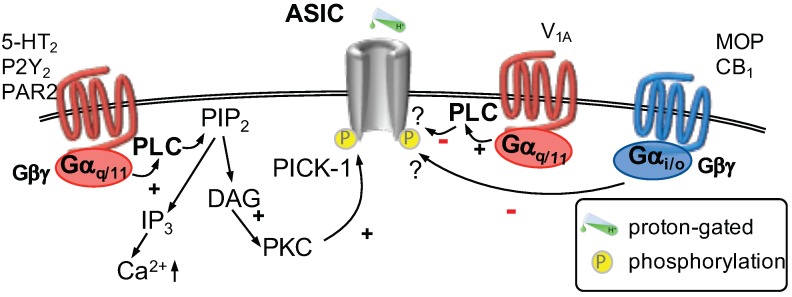Figure 2.
Acid sensing ion channels (ASIC) are gated by increasing concentrations of H. Two G-protein pathways modulate the function of ASICs. Activation of G-coupled receptors (left) leads to activation of phospholipase C (PLC) which hydrolyzes phosphatitylinositol 1,4, bisphosphate (PIP) into inositiol 1,4,5 trisphosphate (IP) and diacylglycerol (DAG). DAG activates protein kinase C (PKC) which phosphorylates ASICs increasing their function. The interaction of PKC with ASICs requires the presence of PICK-1 (protein interacting with C-kinase 1). By contrast, activation of G-coupled V receptors (center) were shown to decrease ASIC-mediated currents via an unknown mechanism. Stimulation of G-coupled receptors (right) was shown to decrease currents through ASICs involving an undetermined mechanism.

